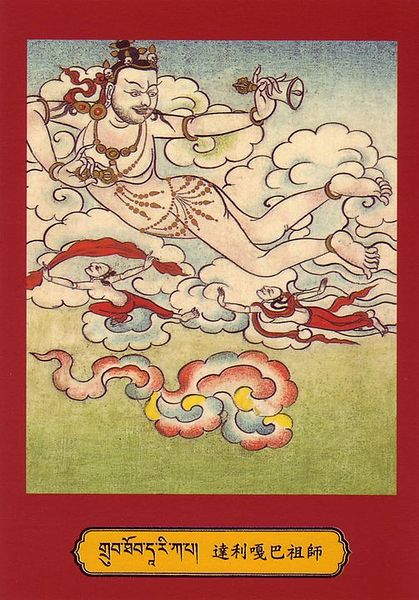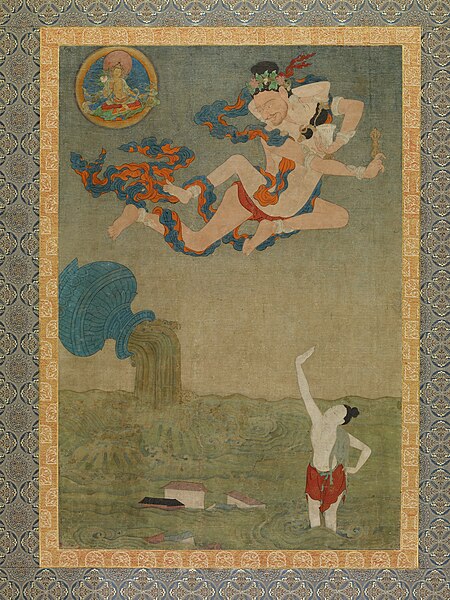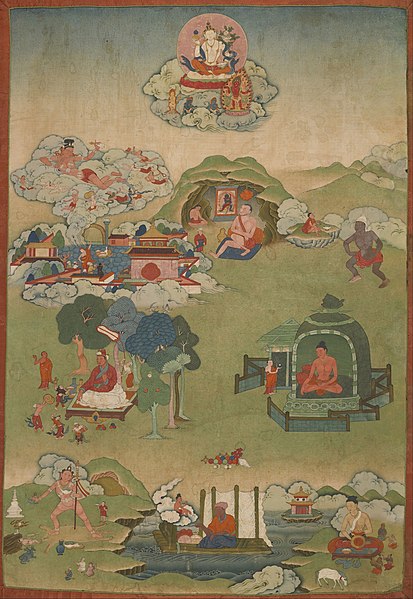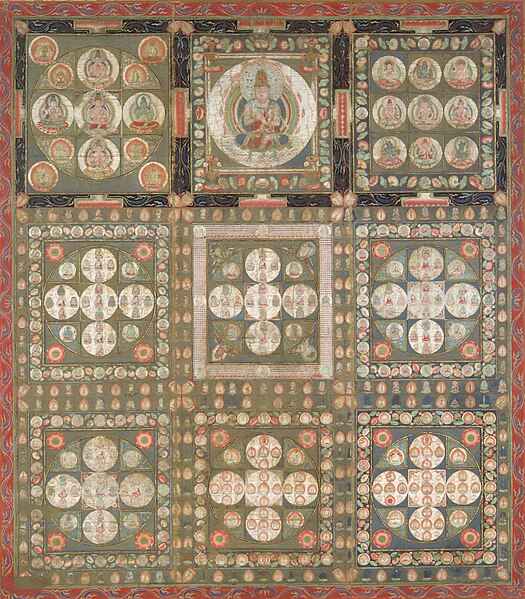Dream yoga
Videos
Page
Dream yoga or milam —the Yoga of the Dream State—is a suite of advanced tantric sadhana of the entwined Mantrayana lineages of Dzogchen. Dream yoga consists of tantric processes and techniques within the trance Bardos of Dream and Sleep Six Dharmas of Naropa.
In the tradition of the tantra, the dream yoga method is usually passed on by a qualified teacher to his/her students after necessary initiation. Various Tibetan lamas are unanimous that it is more of a passing of an enlightened experience rather than any textual information.

Darikapa, 9th-century Buddhist mahasiddha. After achieving the ability to lucid dream, a common first stage is attempting to fly in the dream.

Mahasiddha Ghantapa, from Situ Panchen's set of thangka depicting the Eight Great Tantric Adepts. 18th century.
Vajrayana
Videos
Page
Vajrayāna, also known as Mantrayāna, Mantranāya, Guhyamantrayāna, Tantrayāna, Tantric Buddhism, and Esoteric Buddhism, is a Buddhist tradition of tantric practice that developed in the Indian subcontinent and spread to Tibet, Nepal, other Himalayan states, East Asia, and Mongolia.

A vajra and bell (ghanta), which are classic ritual symbols of Vajrayāna

Mahasiddhas, Palpung monastery. Note the figure of the great adept Putalipa at center, seated in a cave and gazing at an image of the meditational deity Samvara and the figure at the bottom left holding a skull-staff (khaṭvāṅga) and a flaying knife (kartika).

Diamond Realm mandala, based on the tantric Vajrasekhara Sutra, and symbolizing the final realization of Vairocana Buddha in Shingon

Naked tantrikas dancing and eating from skull cups (kapalas), closeup of a Chakrasamvara mandala